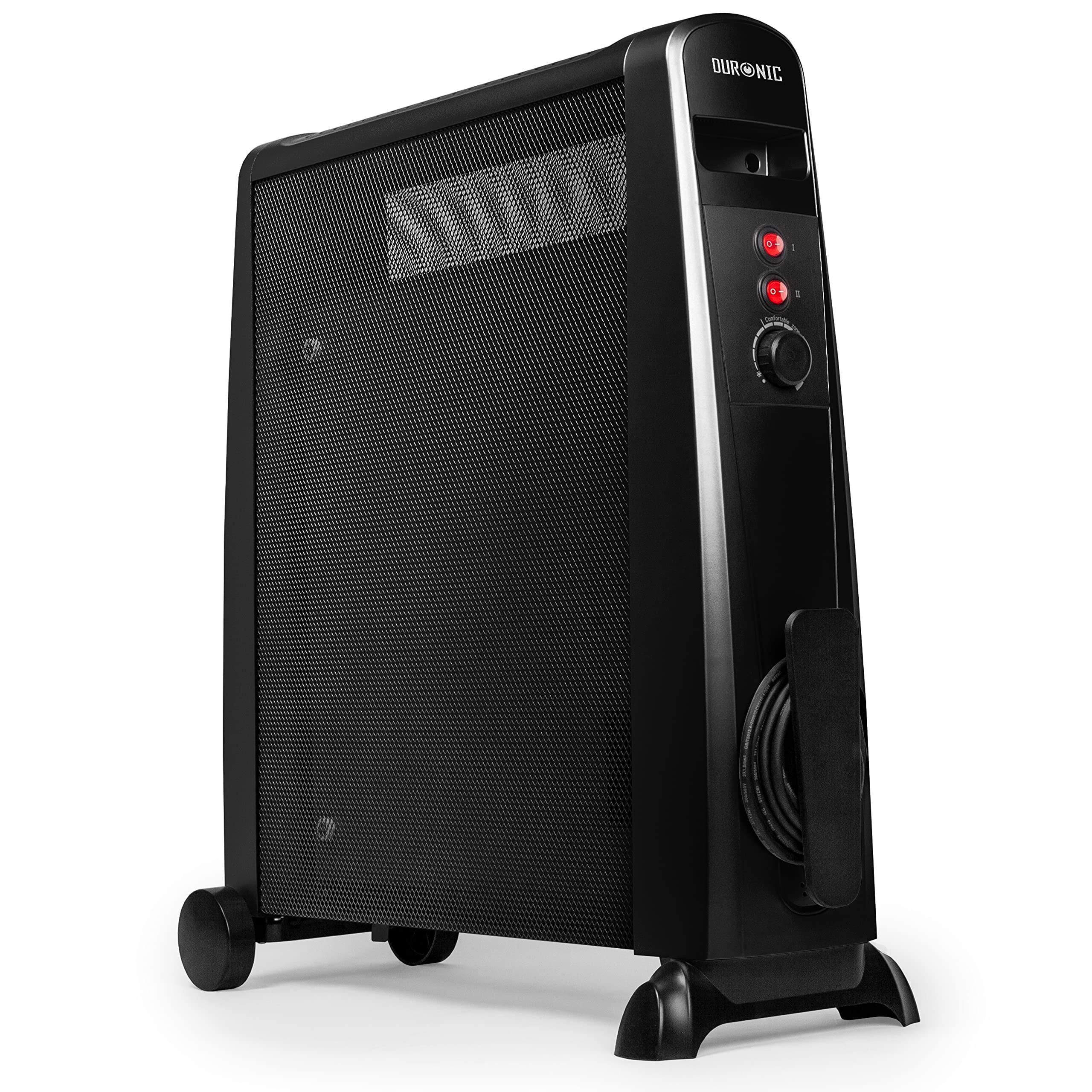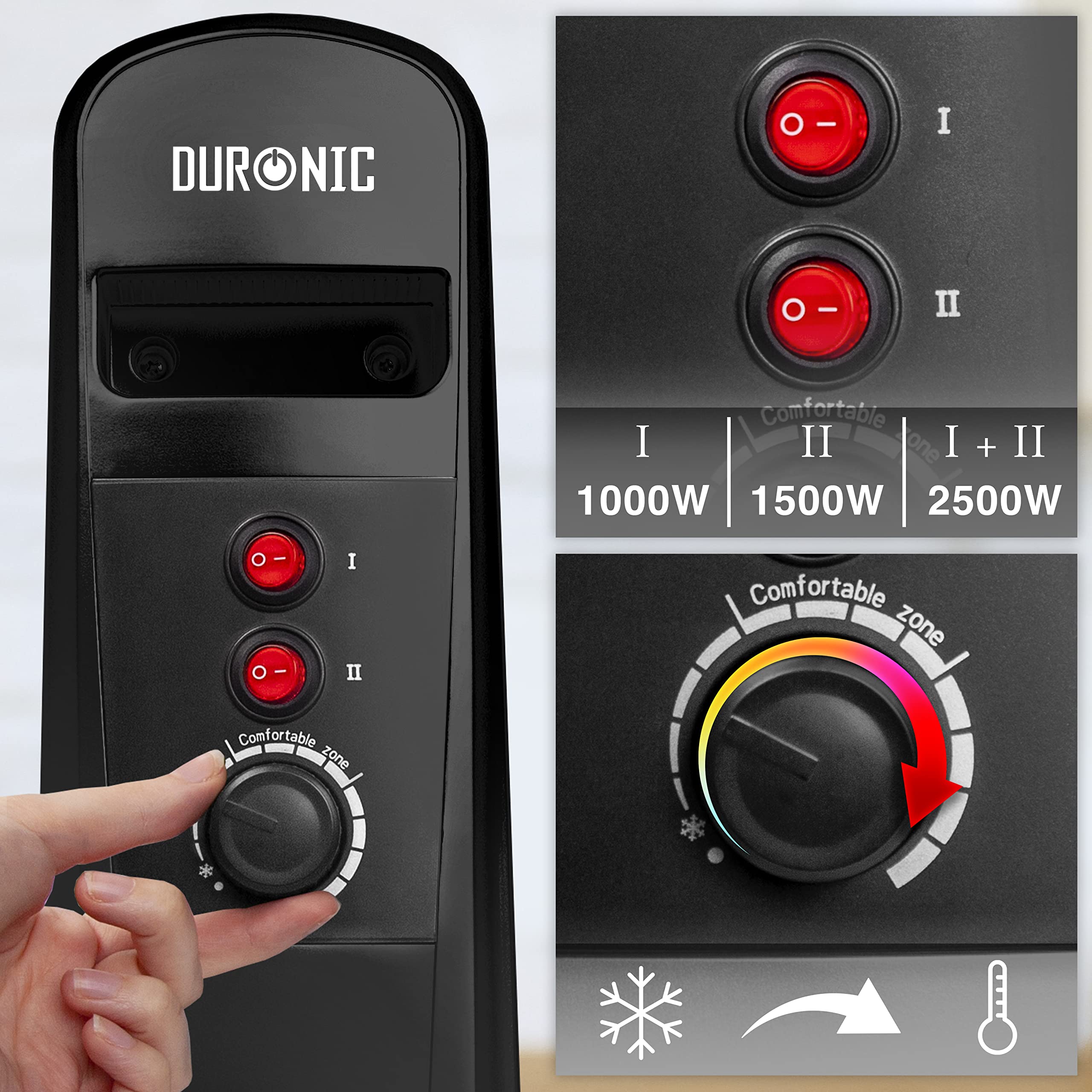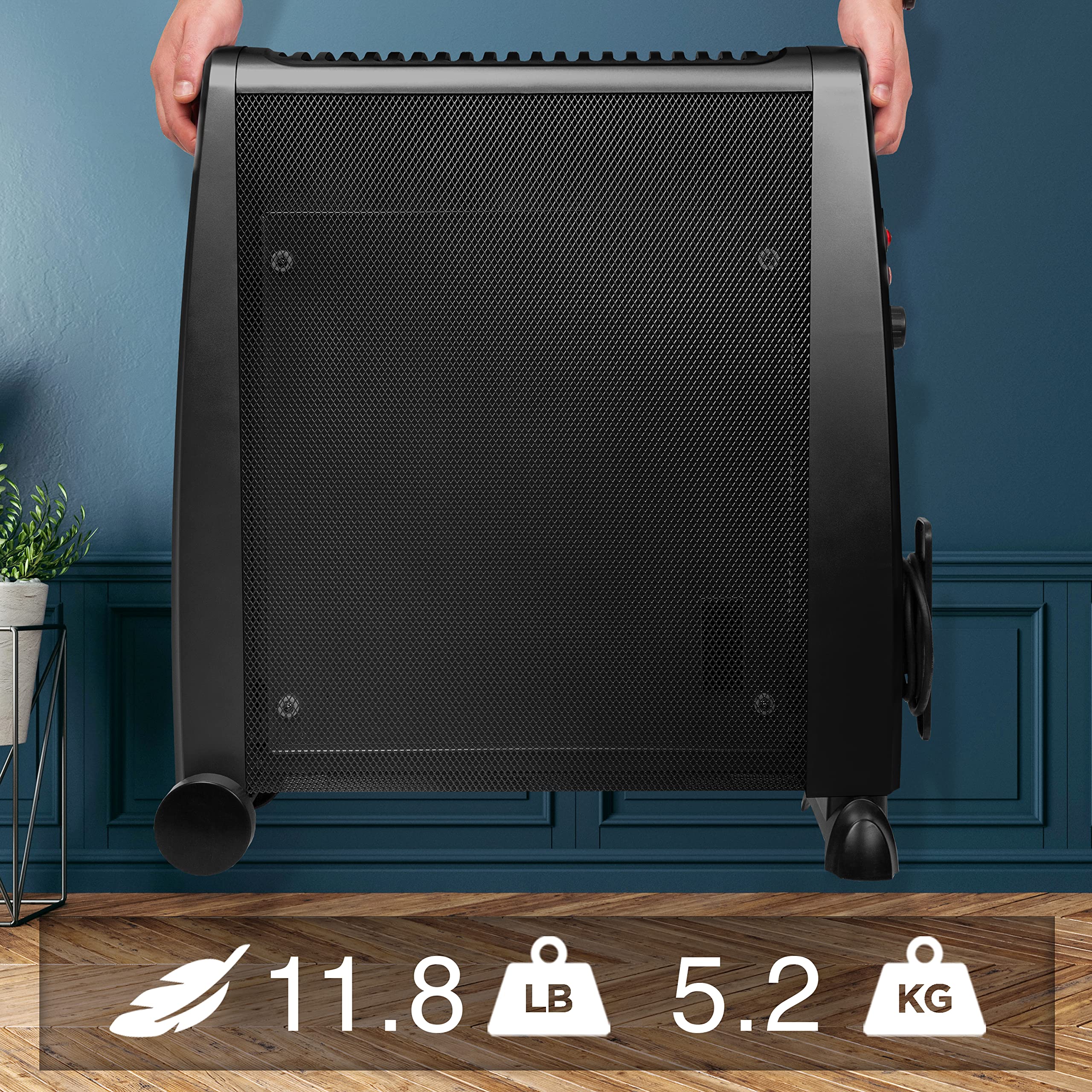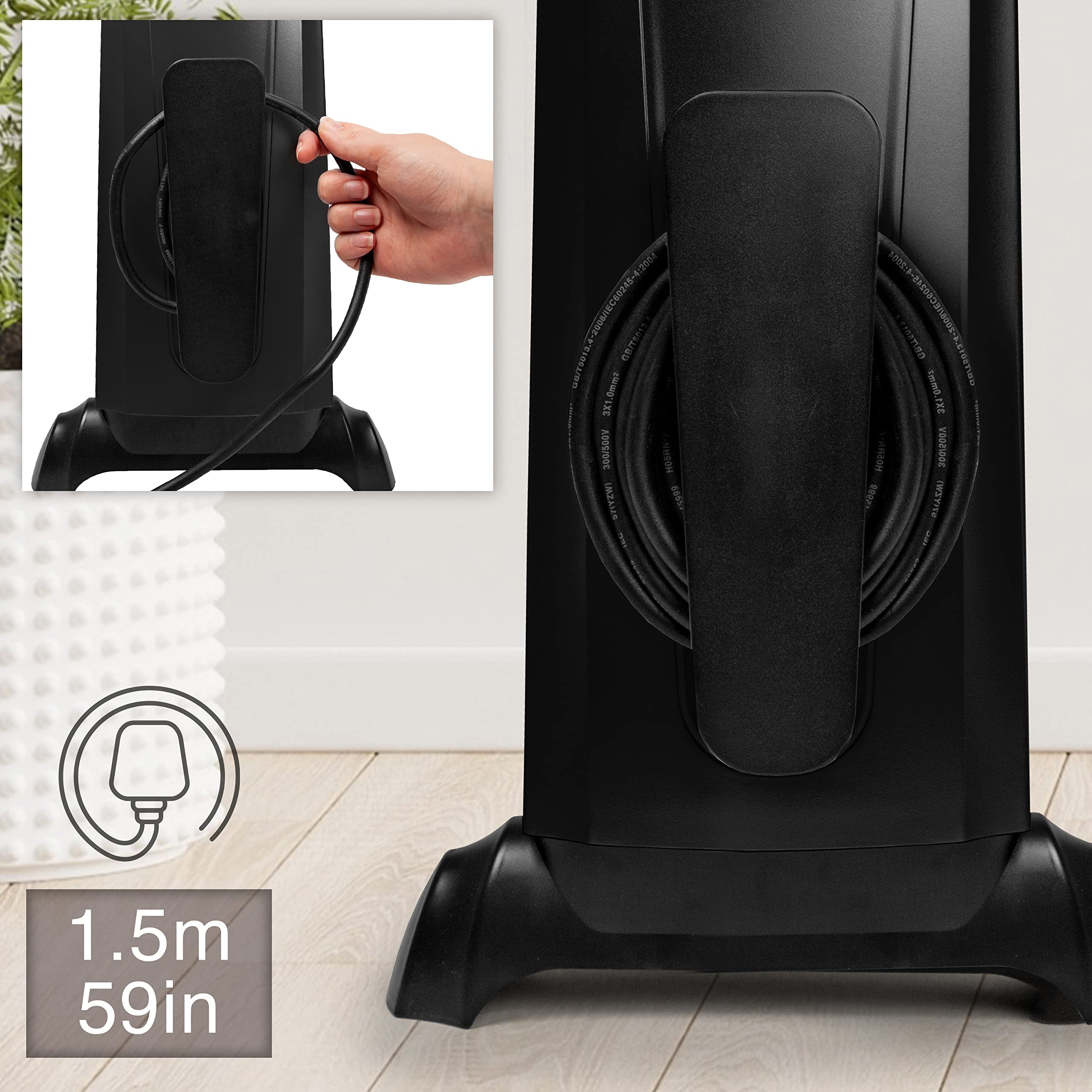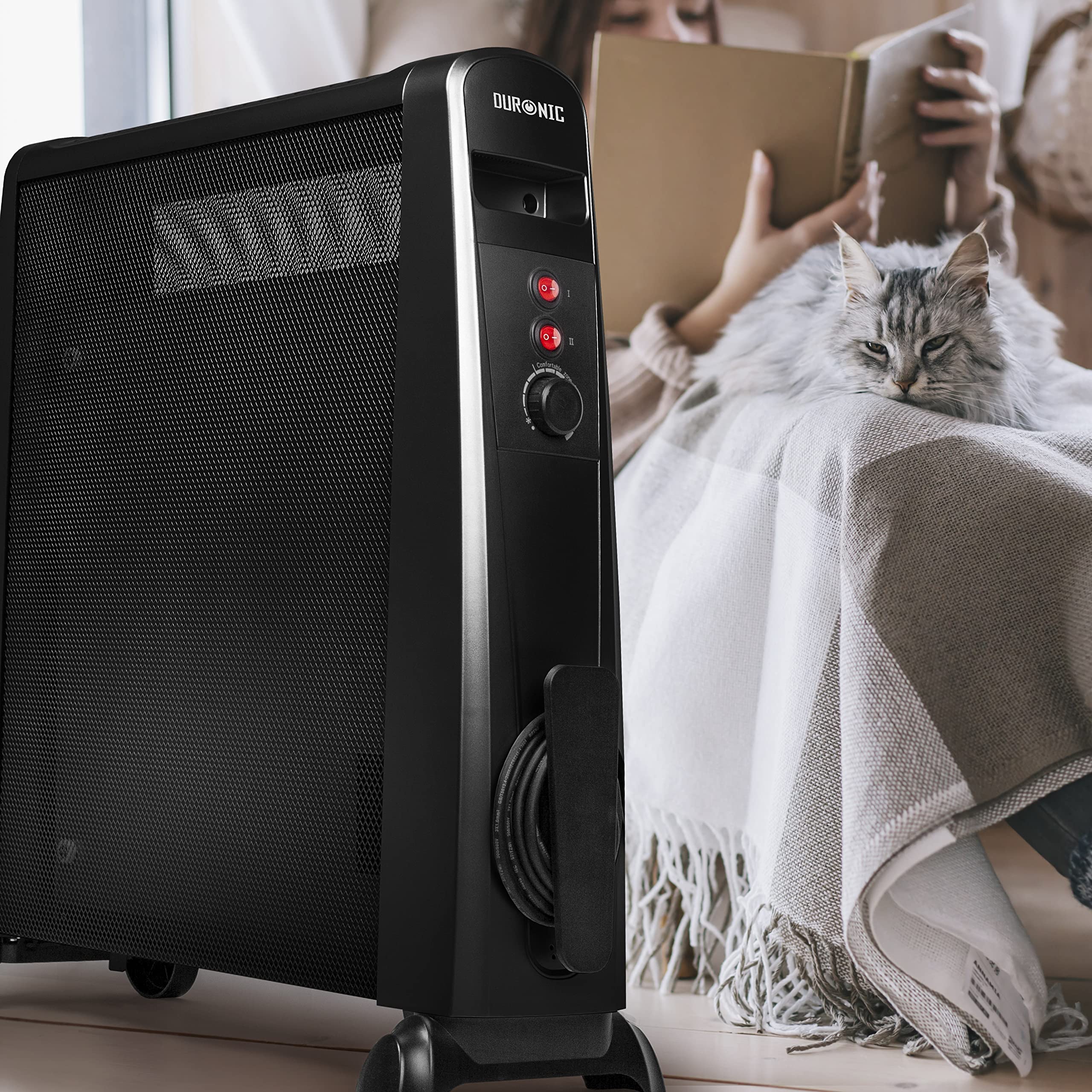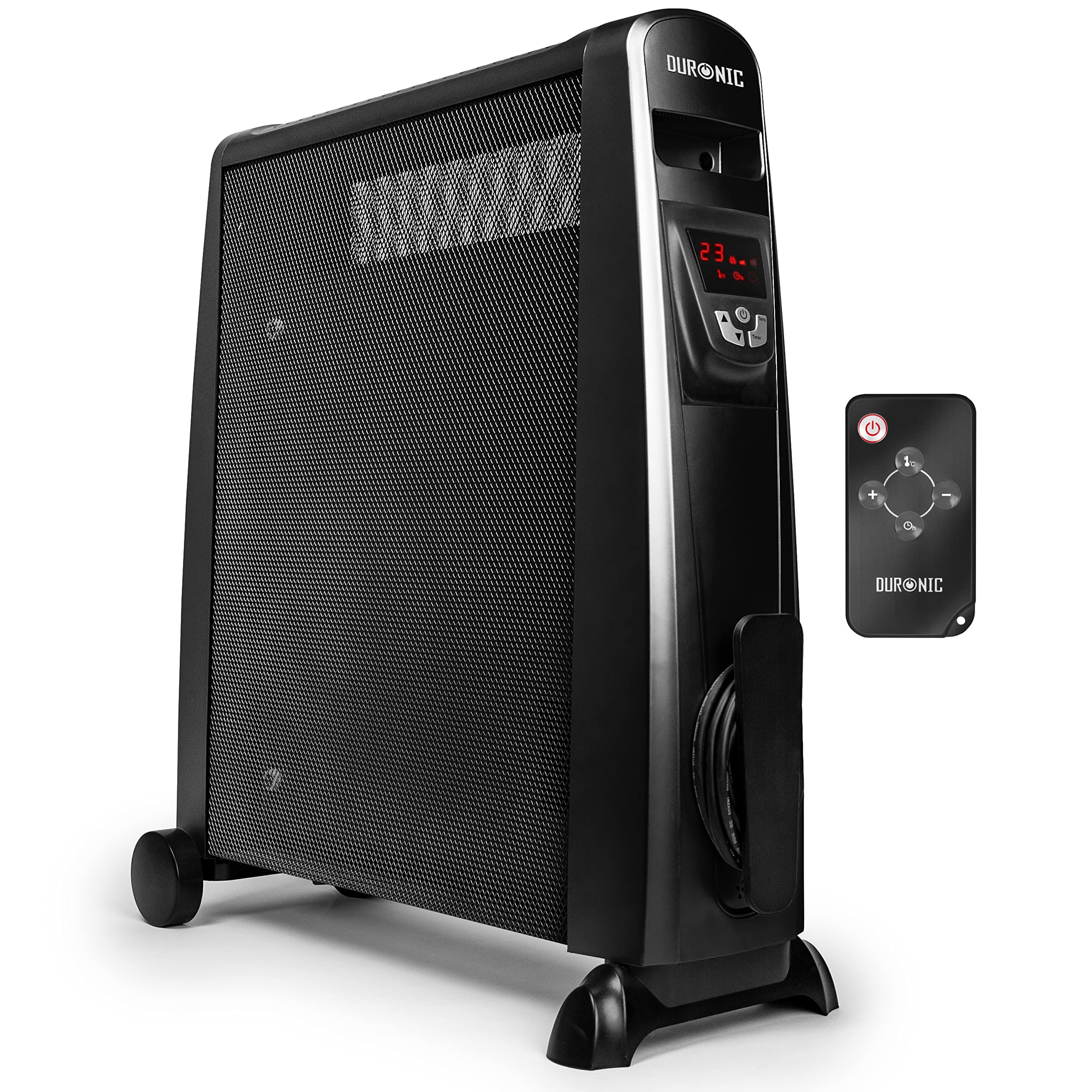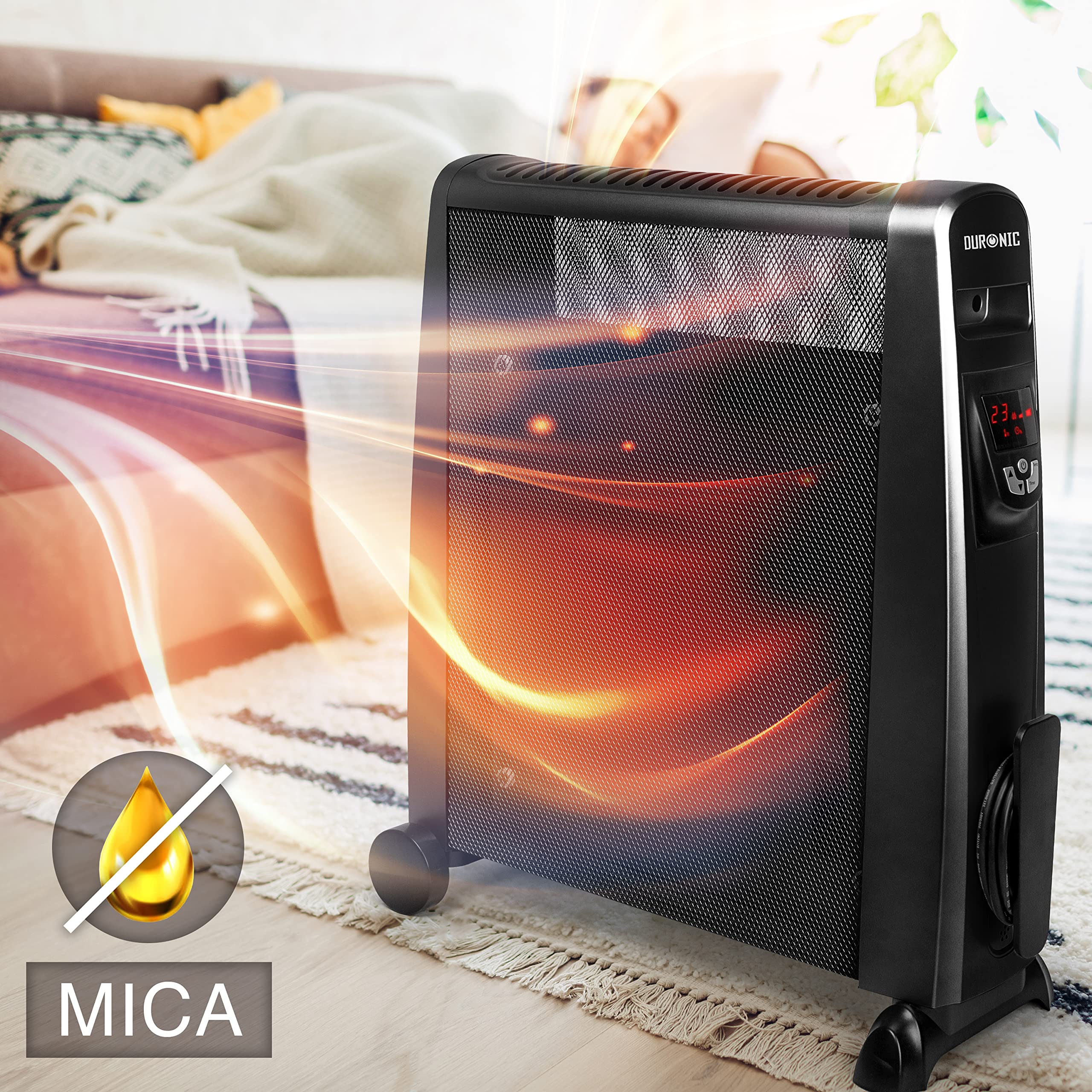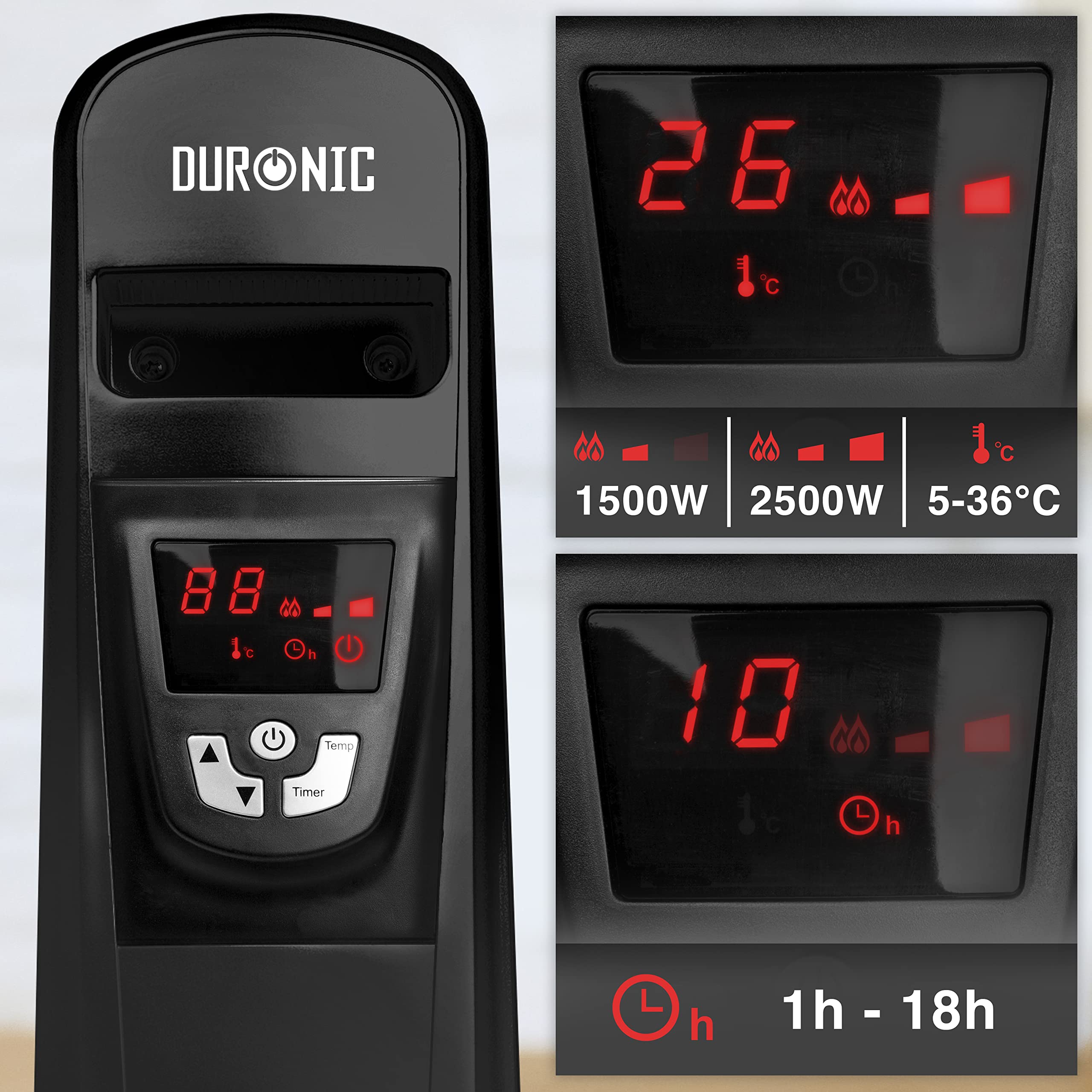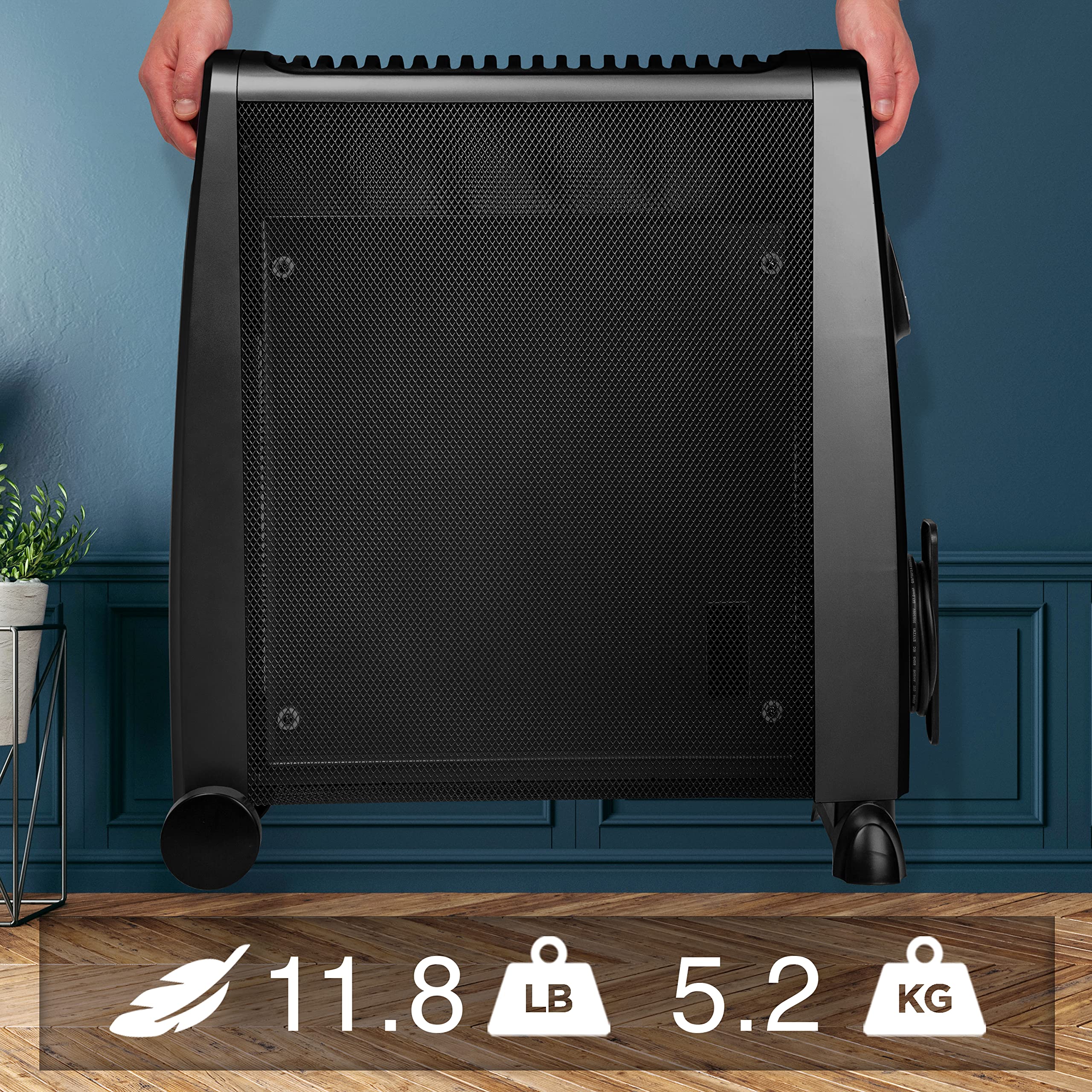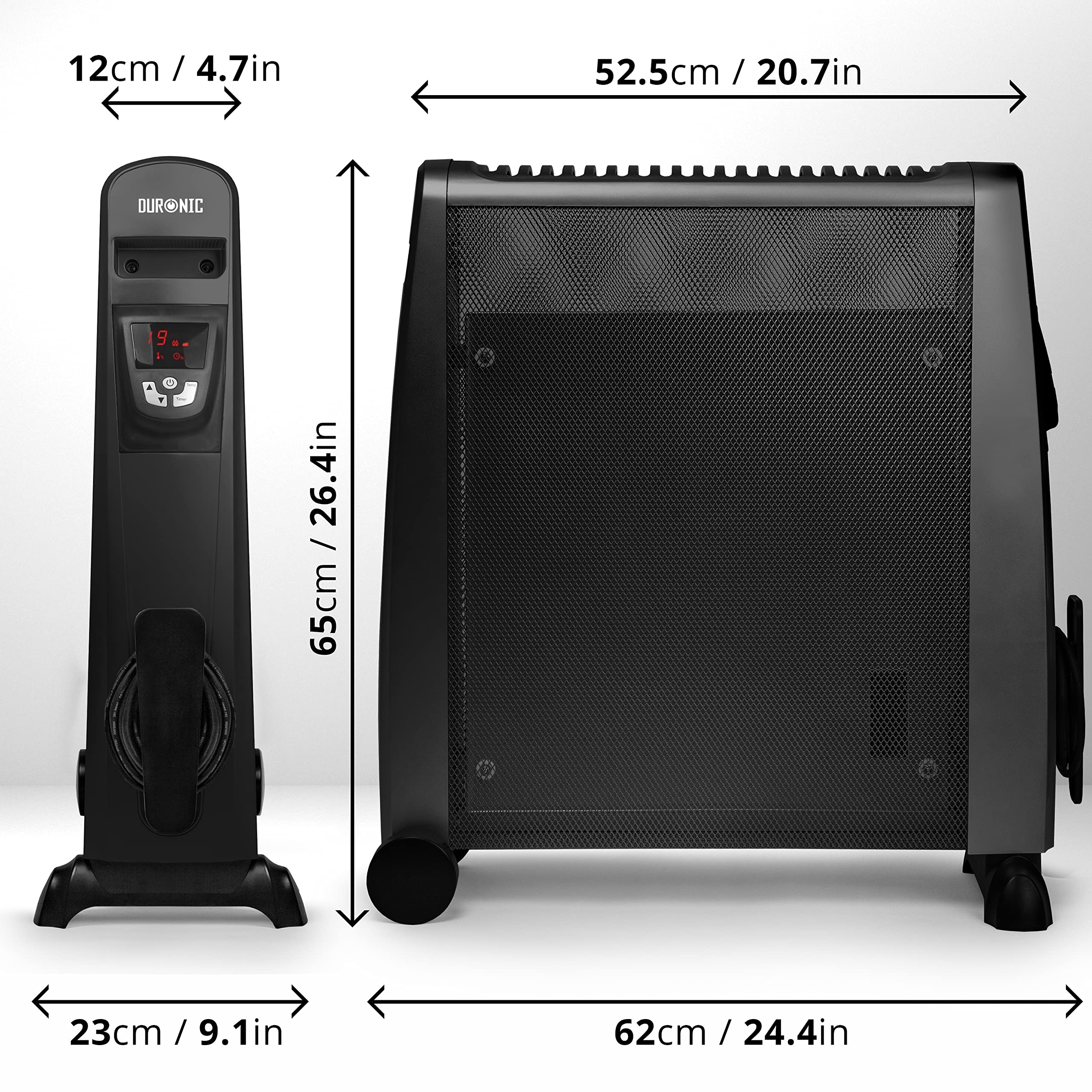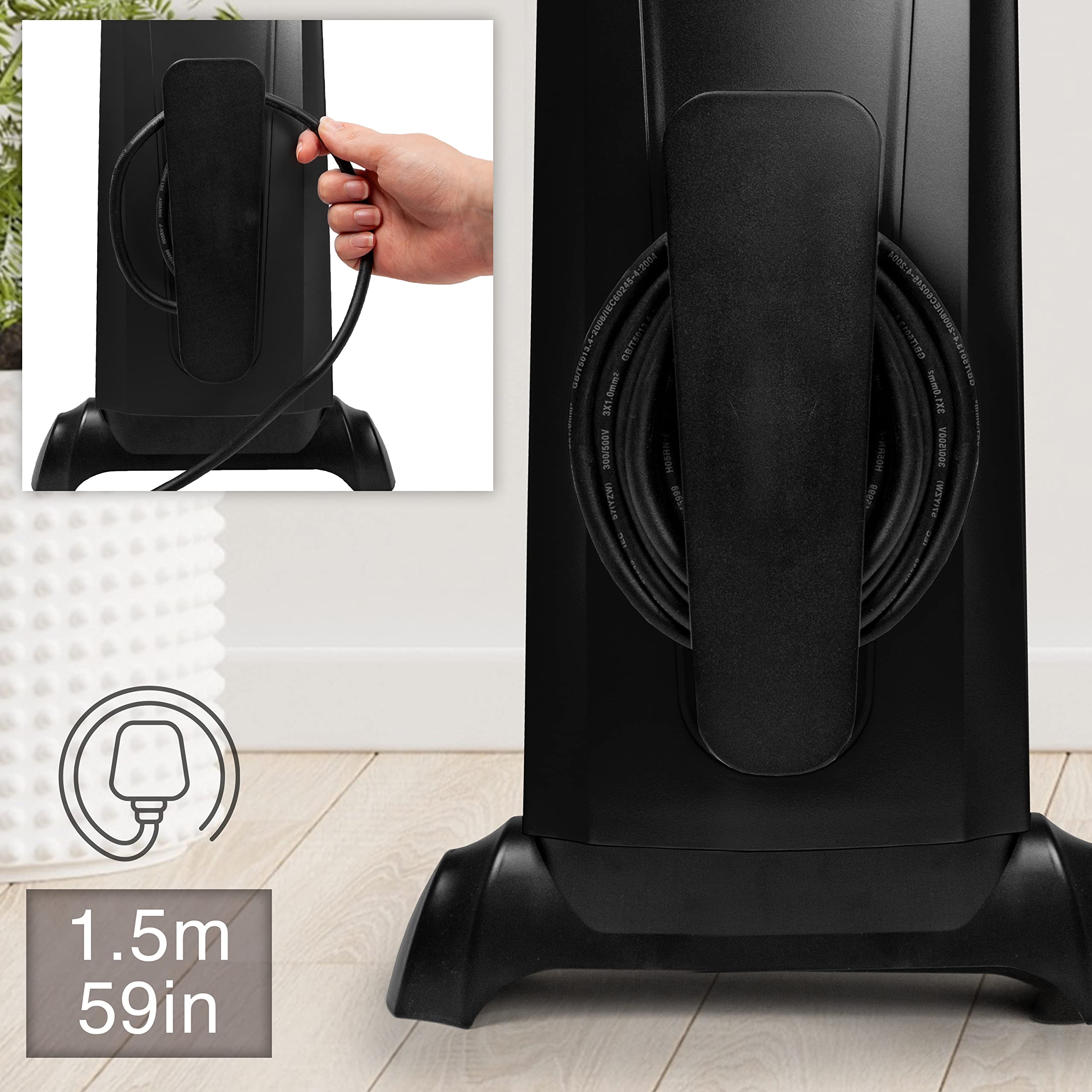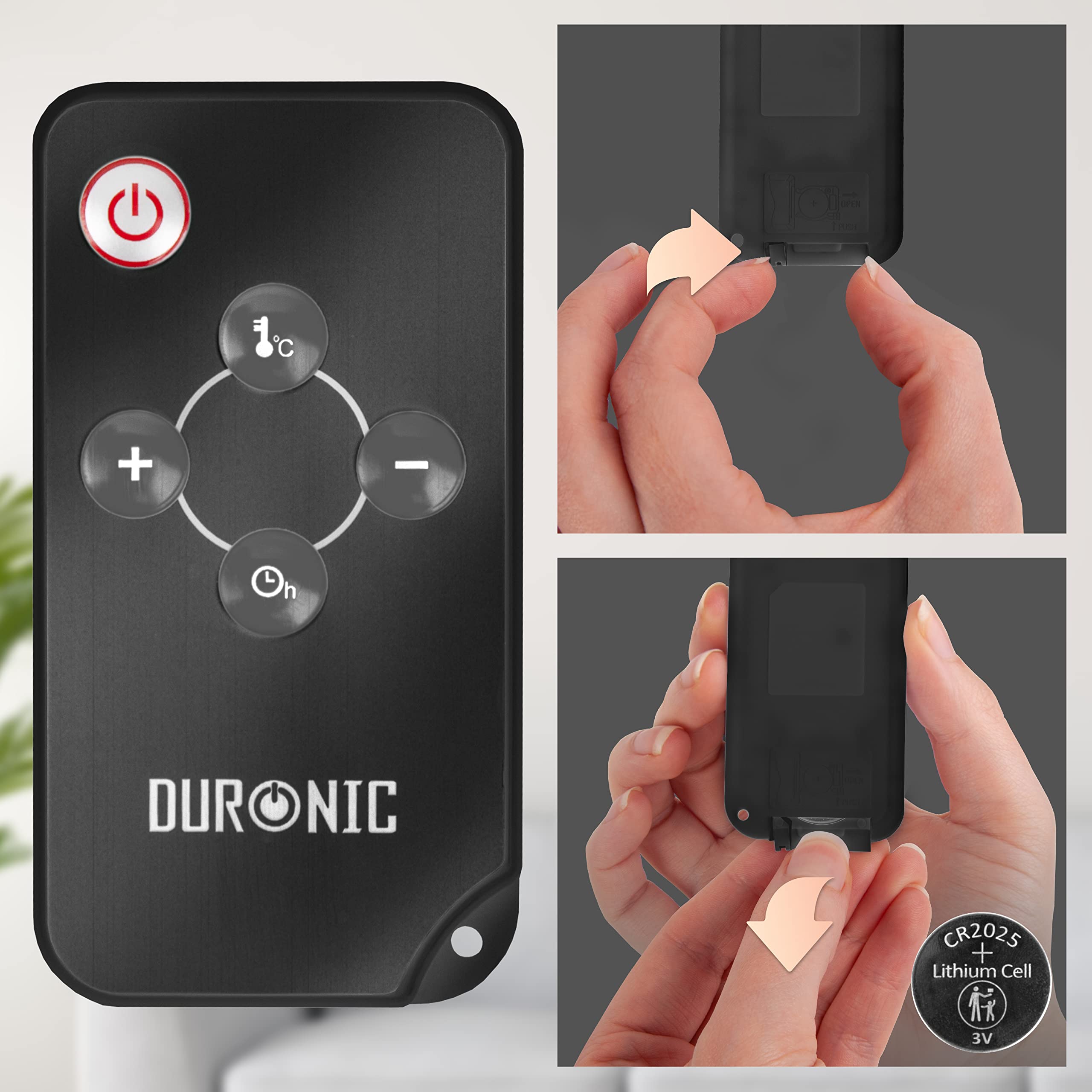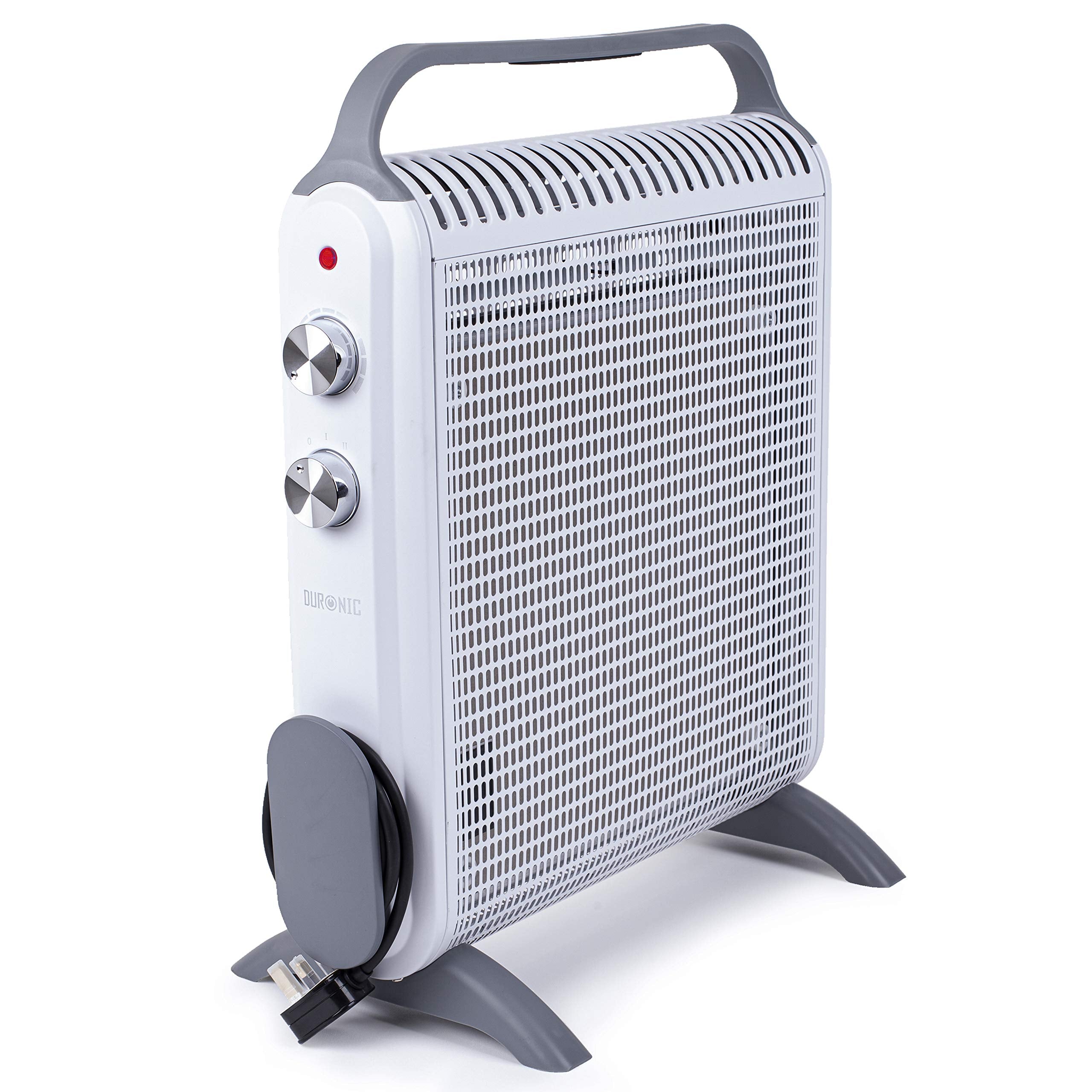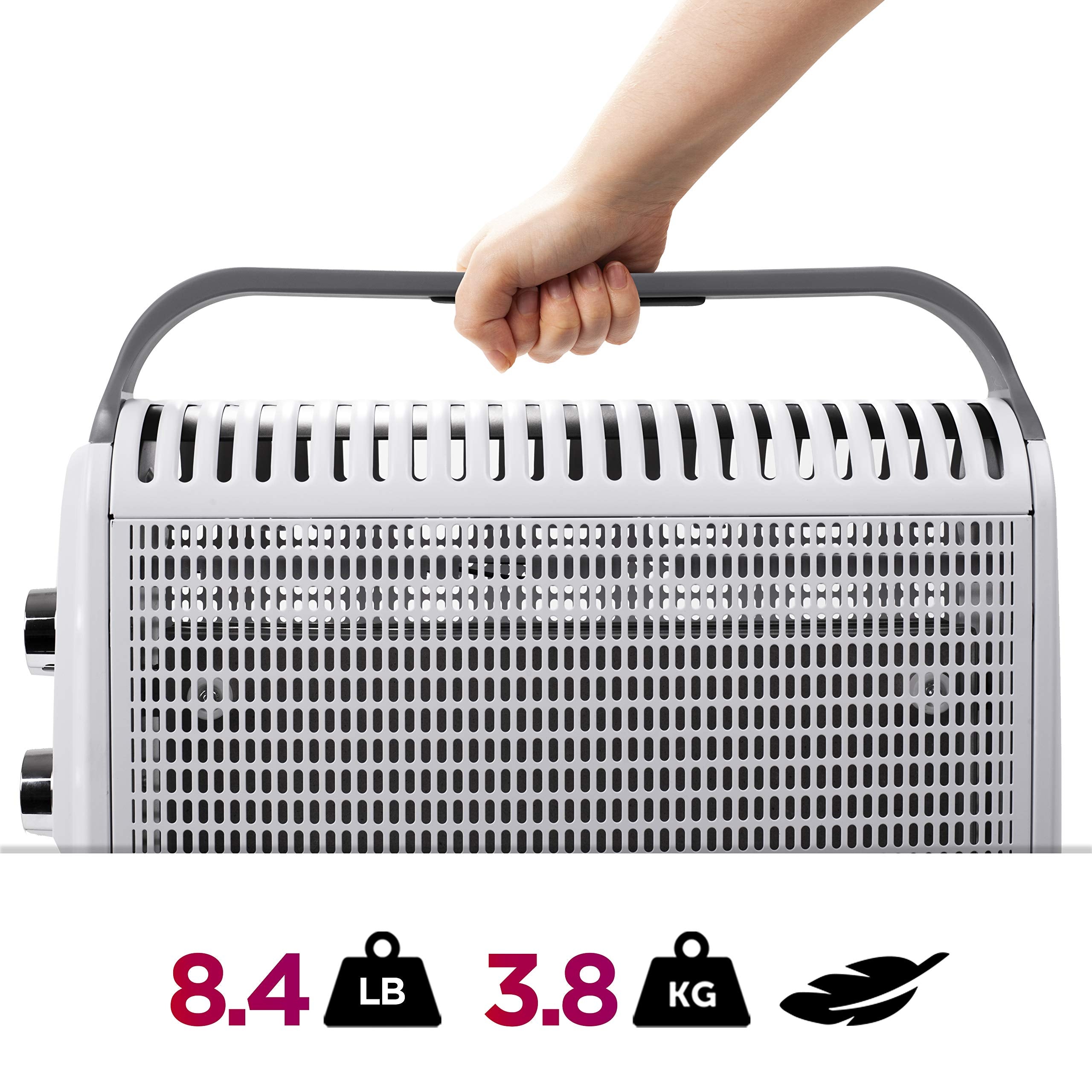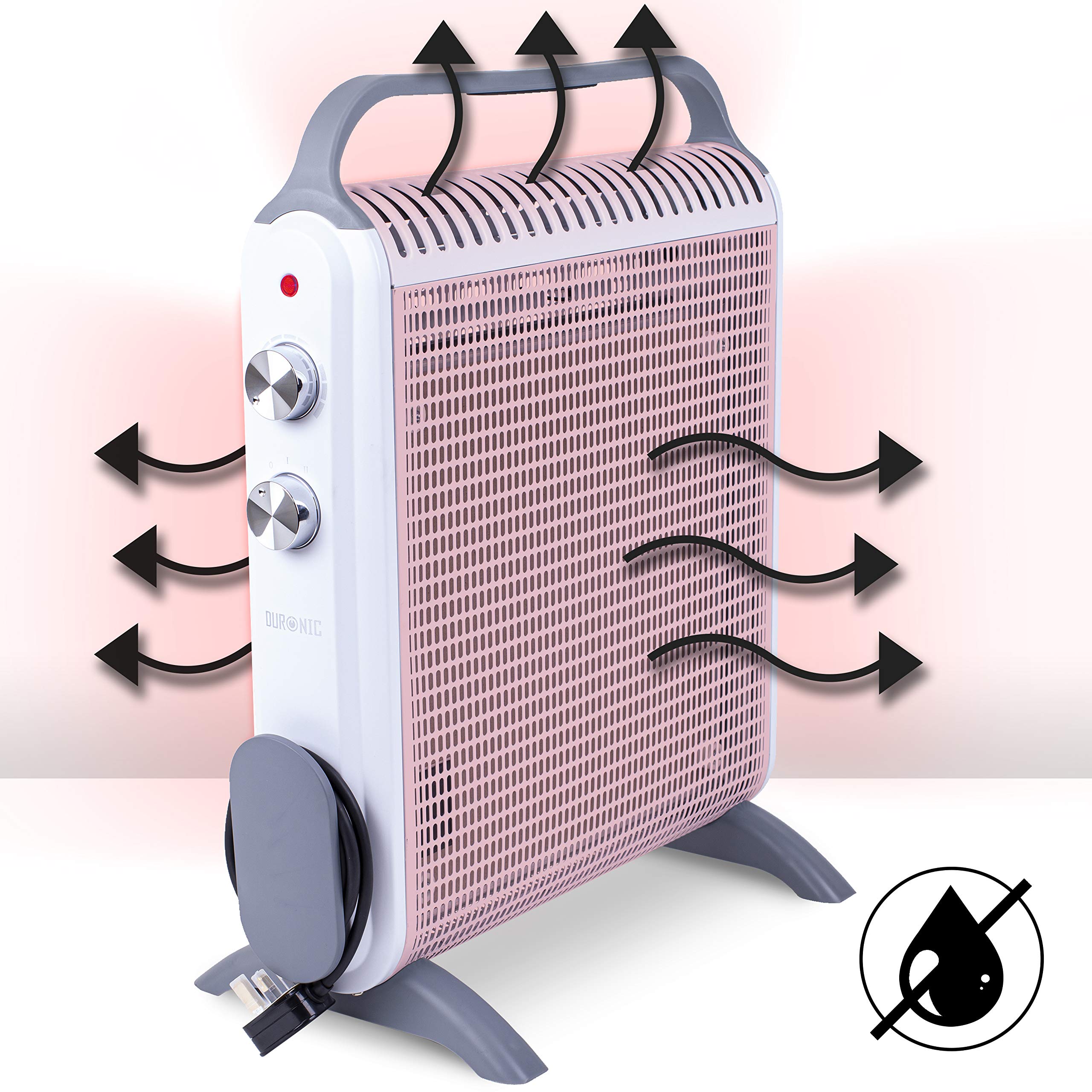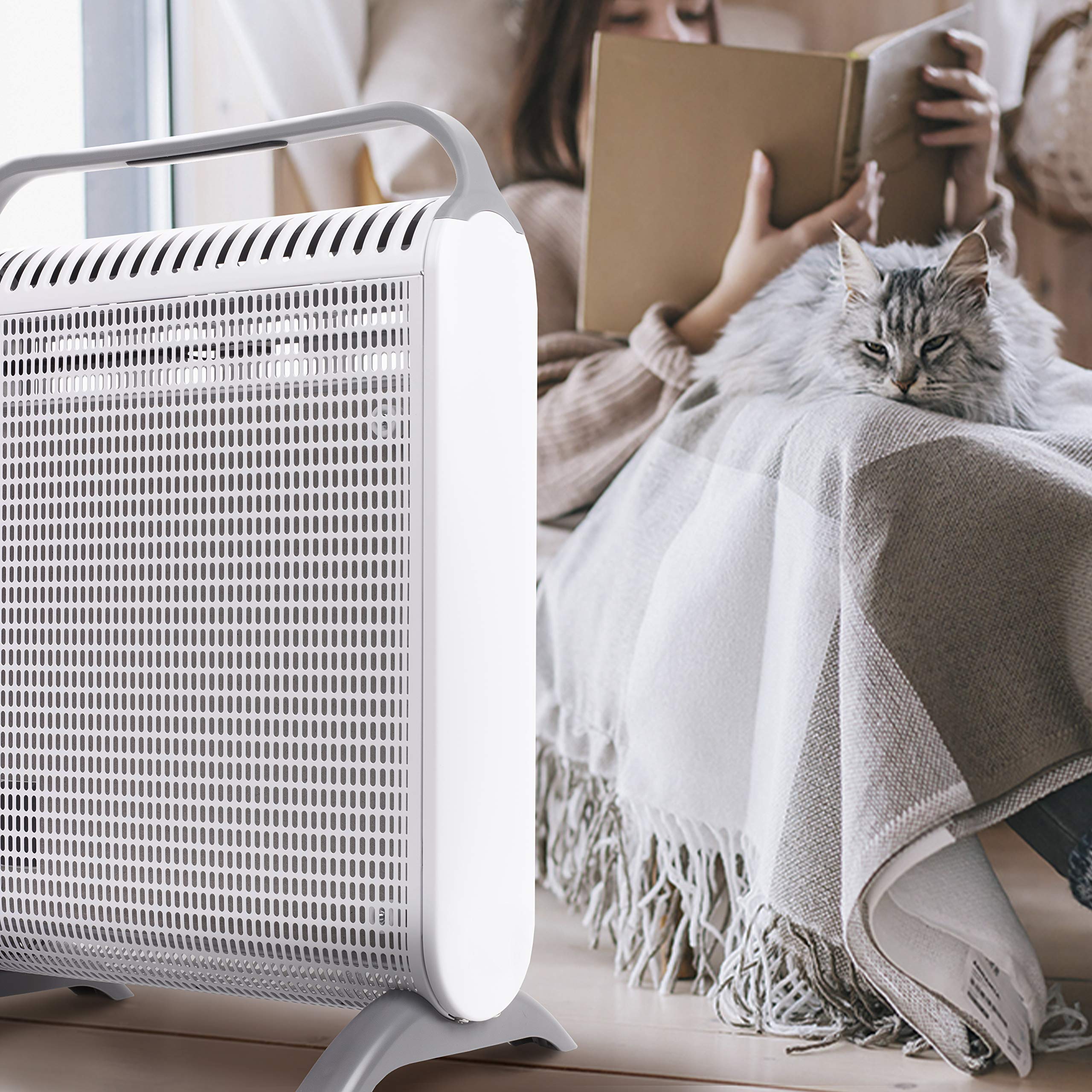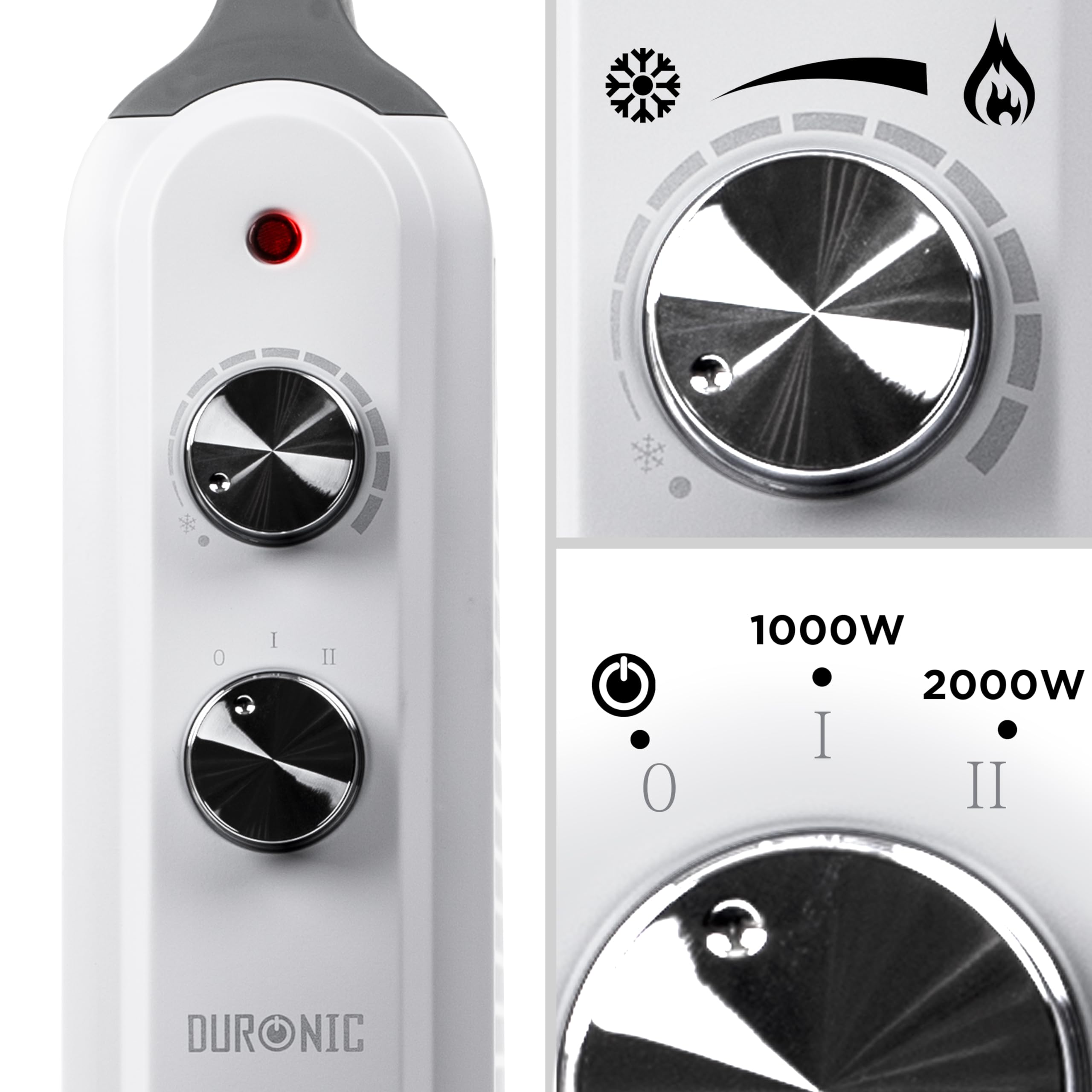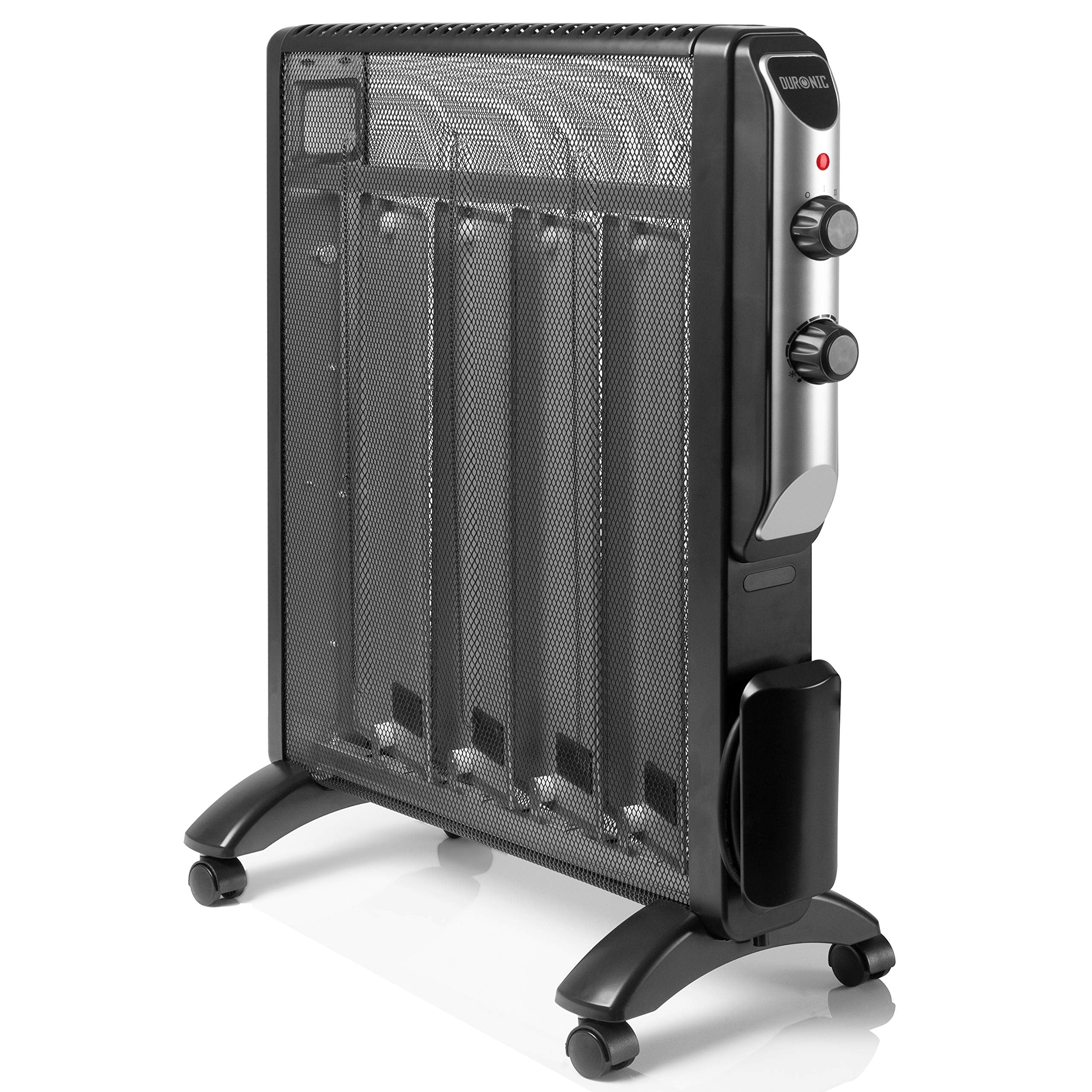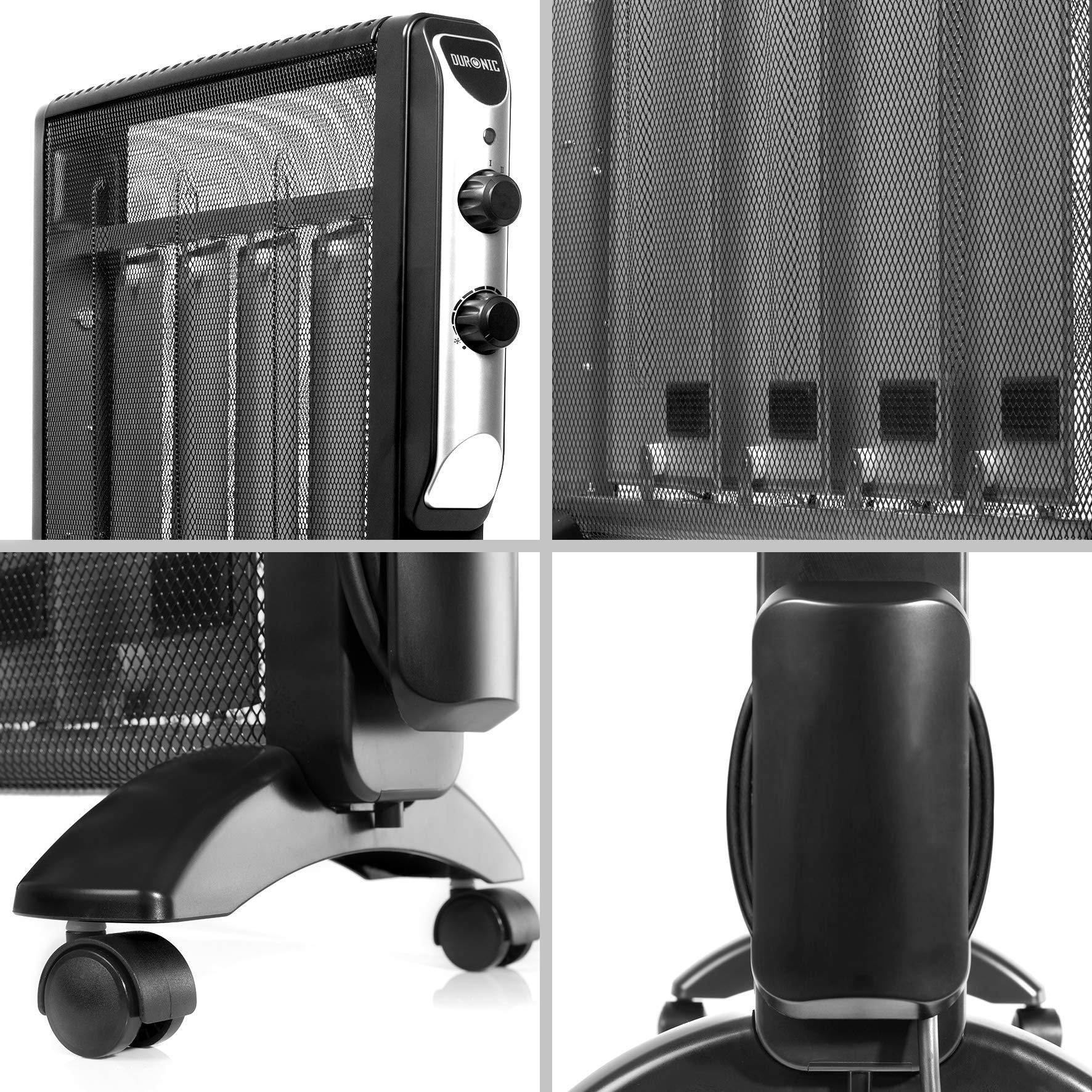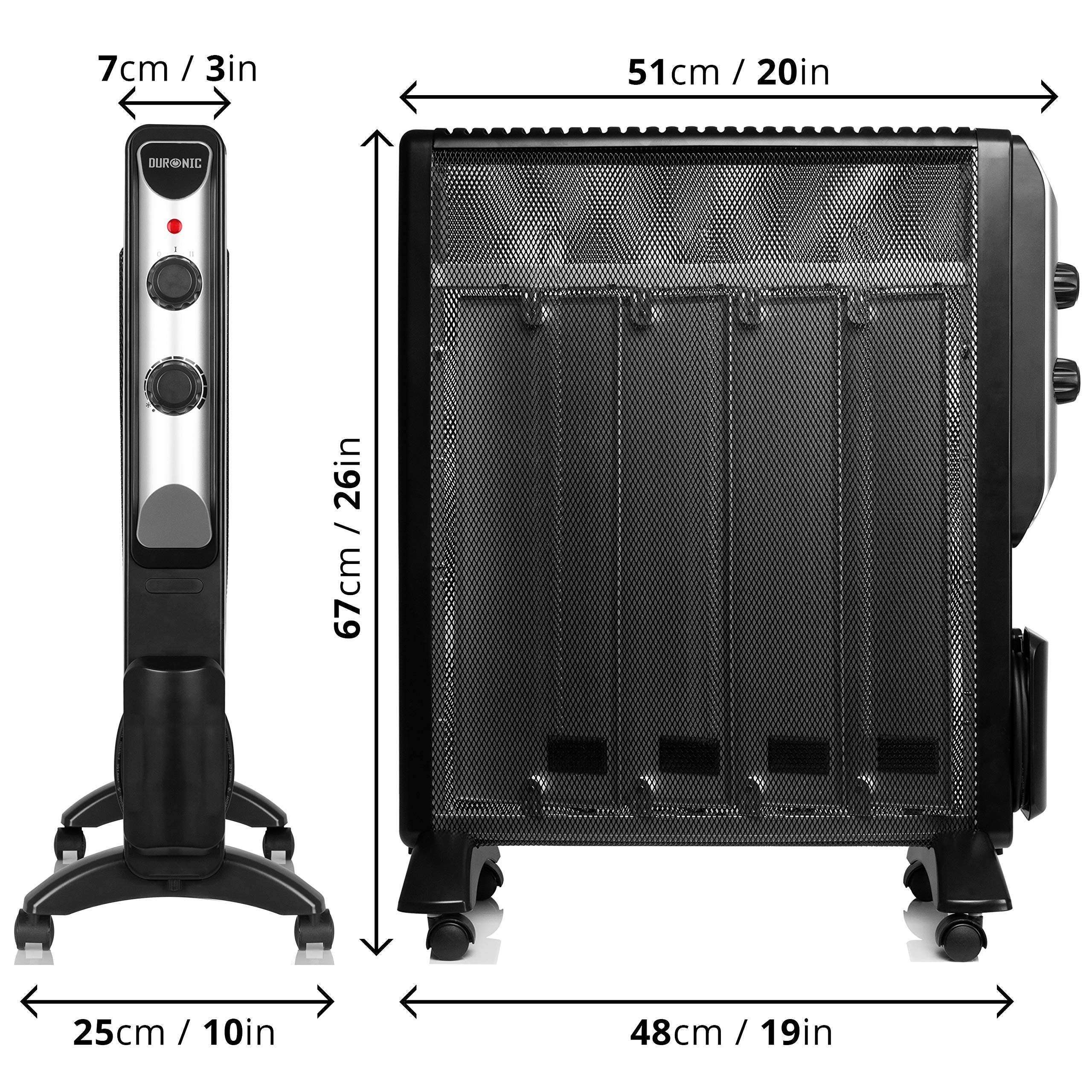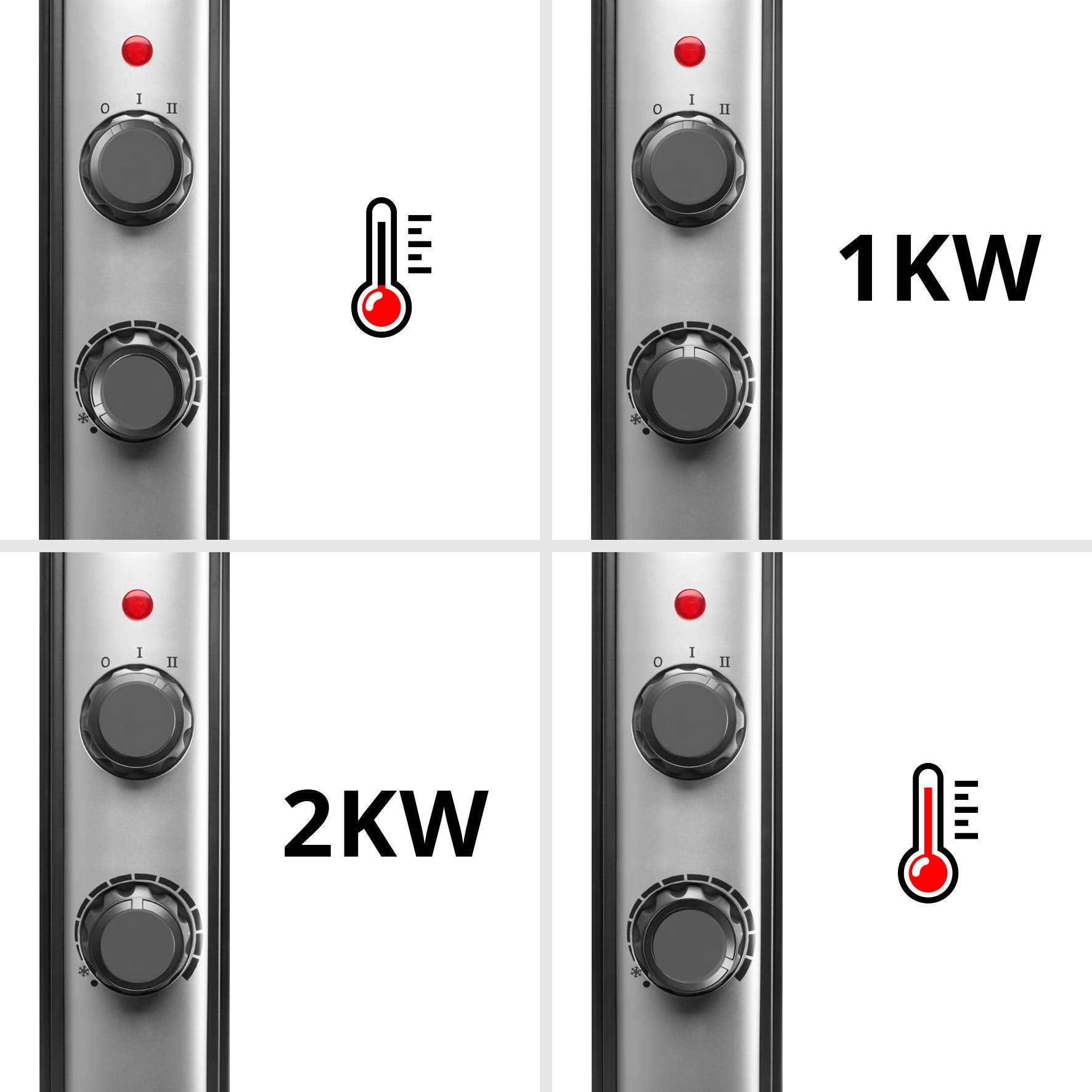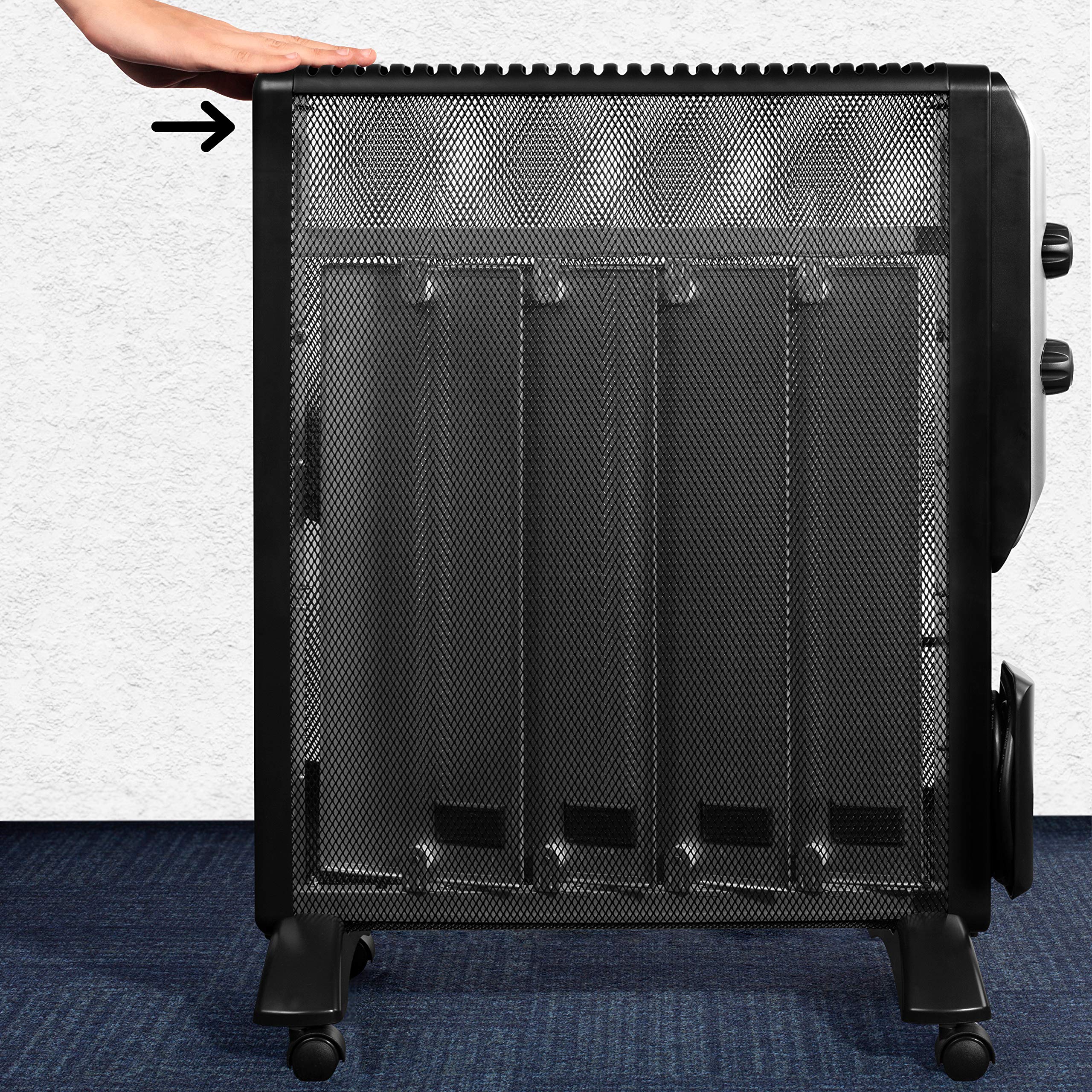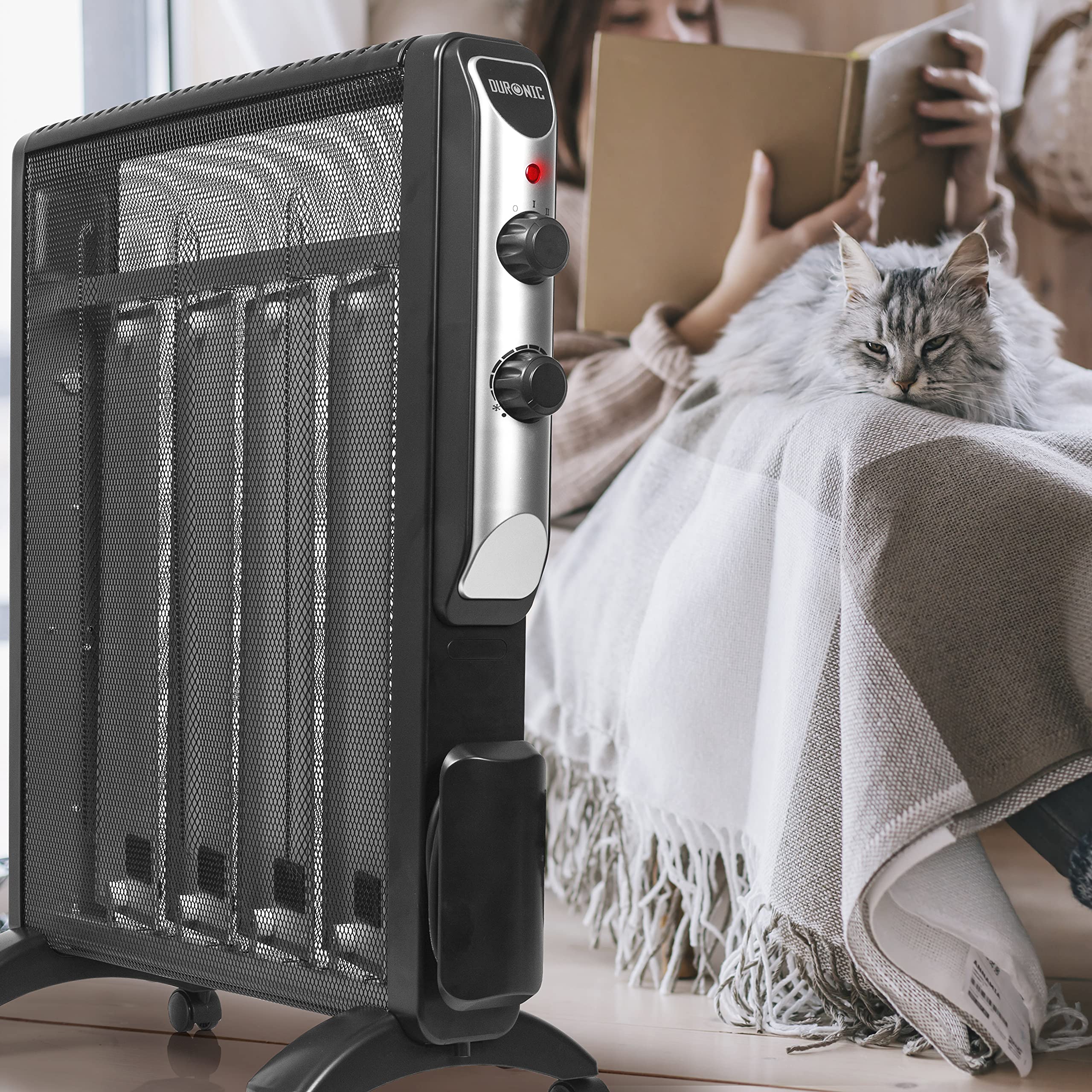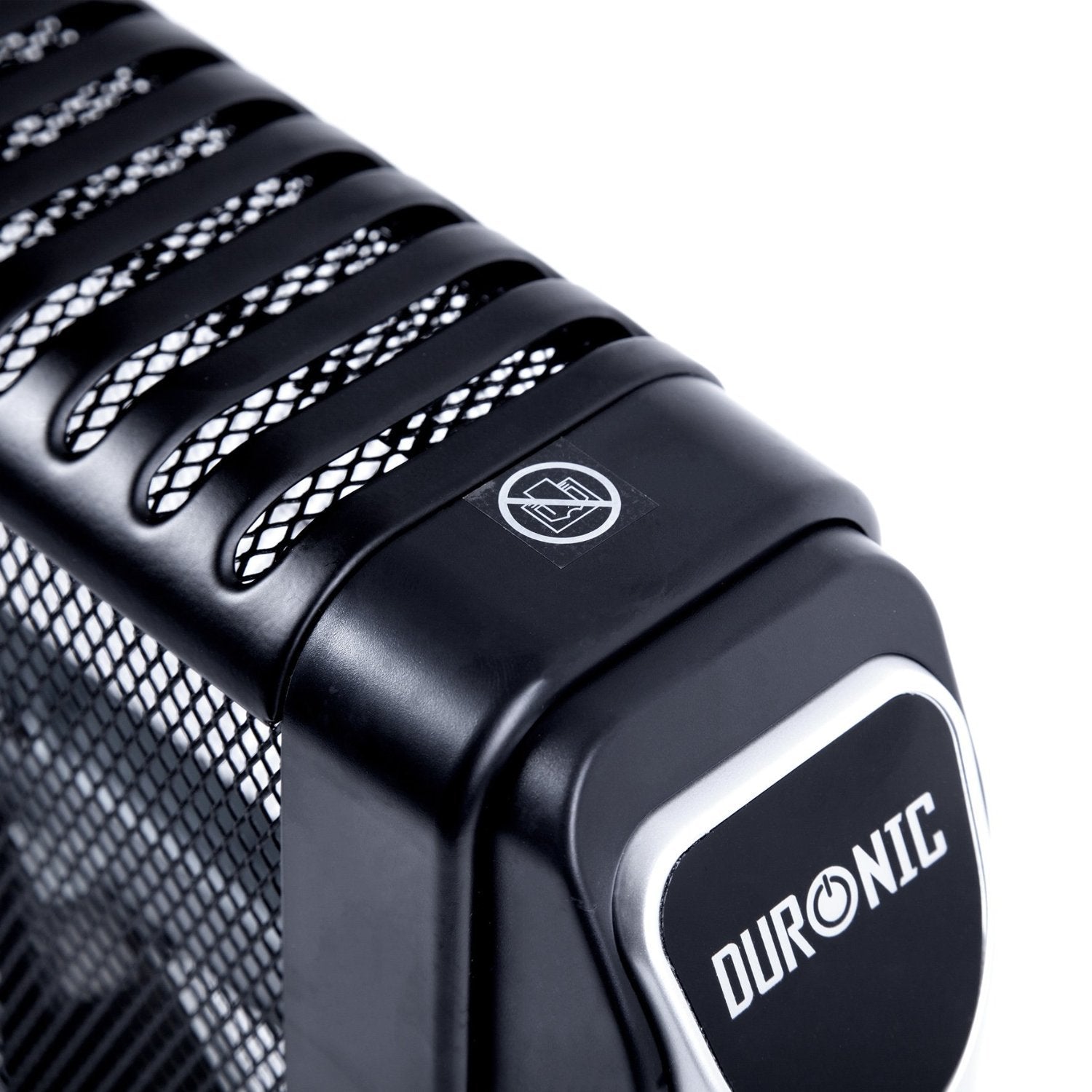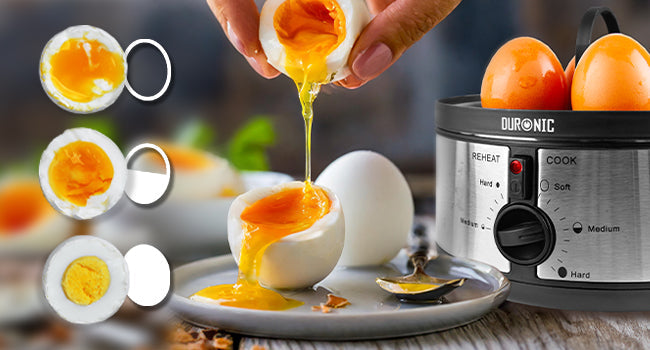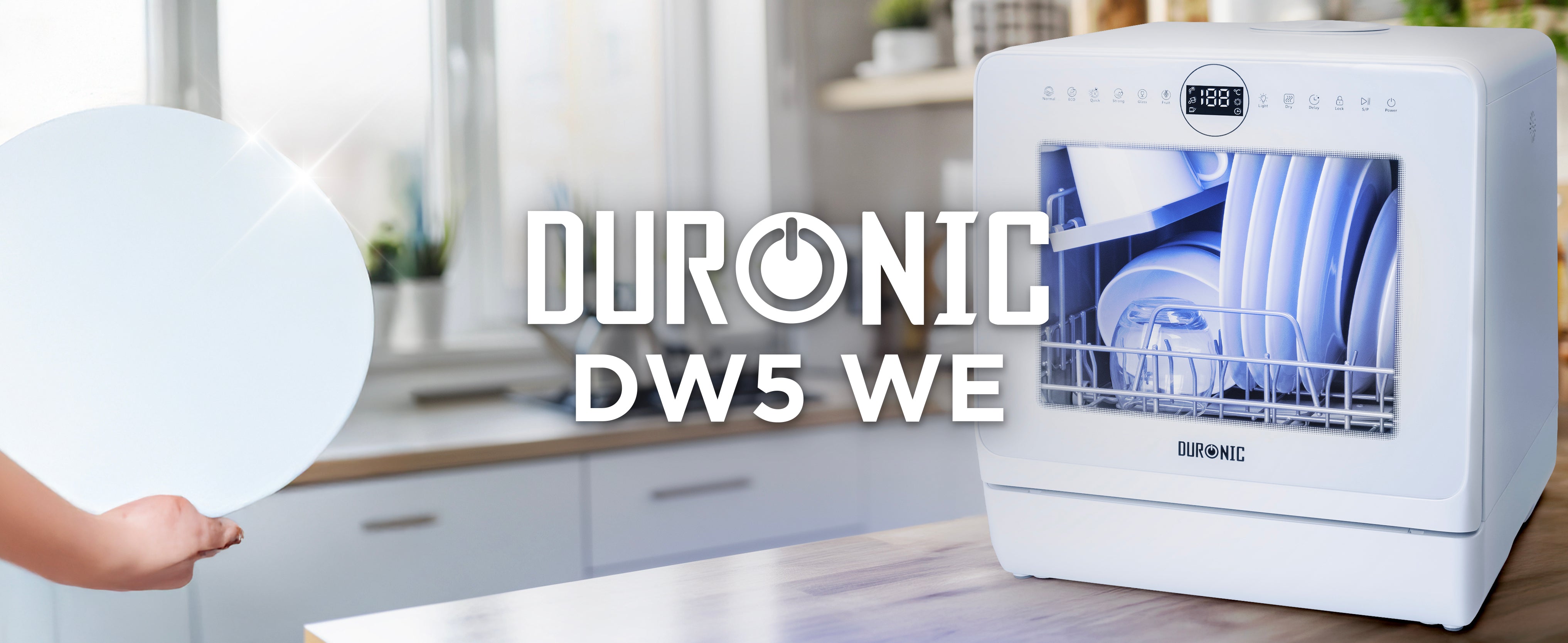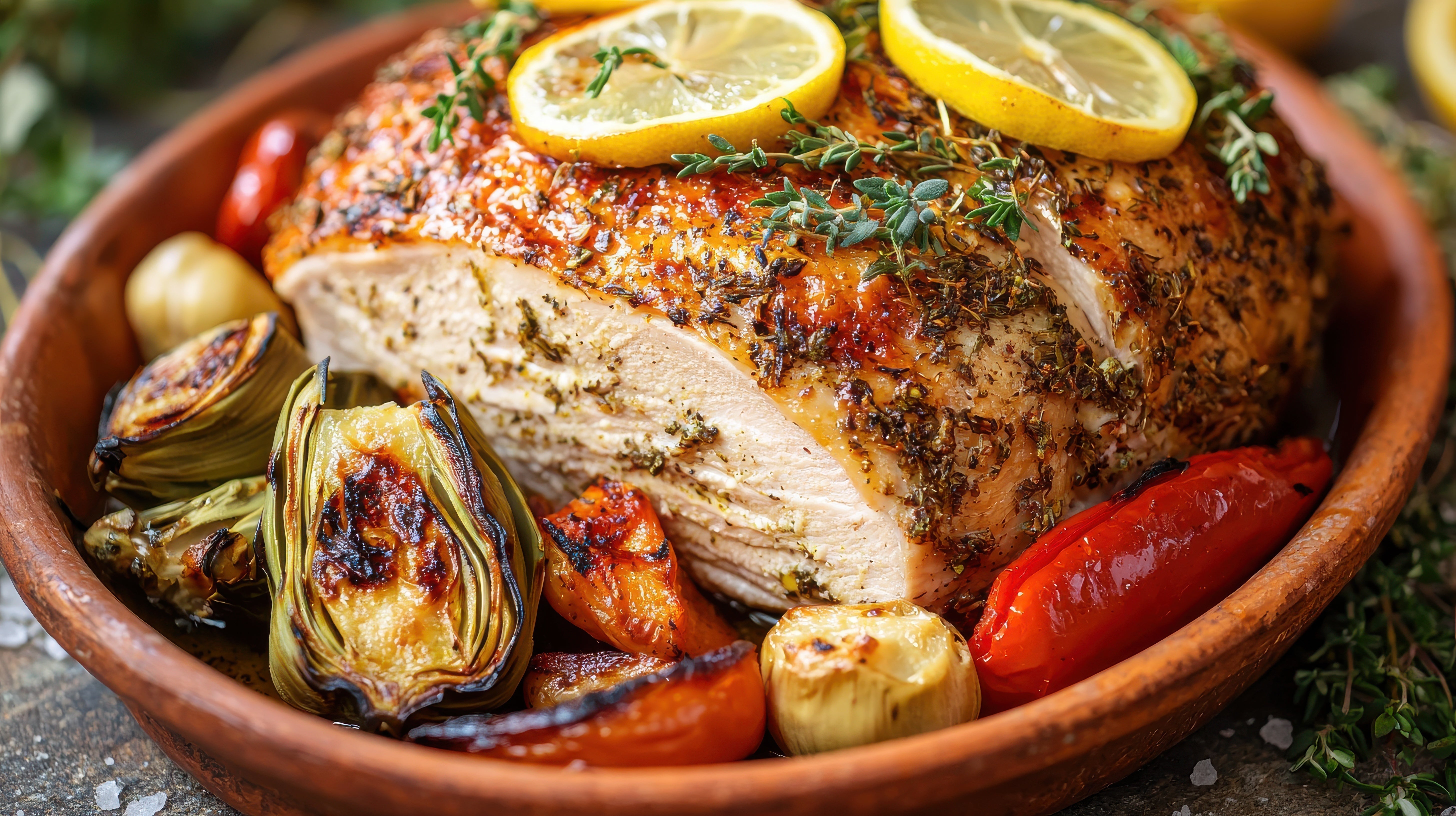How Does a Heater Work?

As the colder months approach, many people start considering efficient and reliable heating solutions. Electric heaters, particularly mica panel heaters, have become popular for their quick heating capabilities, energy efficiency, and safety features. In this blog, we will explore how electric heaters work, delve into the history of heaters, and compare four highly efficient electric heaters: the Duronic HV101, HV102, HV180, and HV220. If you're searching for the best electric heater for your home, this guide will help you decide.
How Does a Heater Work?

An electric heater works by converting electrical energy into heat energy. This process involves passing an electric current through a heating element, which increases the temperature. The generated heat is then radiated or convected into the surrounding air, warming the room.
Heaters come in different types: radiant, convection, and micathermic. Each operates slightly differently, but the primary principle remains the same: electric energy is transformed into heat. Micathermic heaters, in particular, are known for their superior efficiency, combining both radiant and convection heat.
To find out more about the way each heater works, check out this blog.
The Invention of Heaters
The concept of heating can be traced back thousands of years, with rudimentary forms of heating in ancient civilisations, such as open fires. However, the modern electric heater was invented in the late 19th century by Albert Leroy Marsh, who developed an alloy called nichrome, capable of producing heat when electricity passed through it.
Marsh’s invention of the electric heating element in 1905 revolutionised home heating, making it easier, more efficient, and safer than open fires or coal stoves.

Who Discovered How a Heater Works?
While Albert Marsh invented the heating element that powers modern electric heaters, the principles of heat generation through electrical resistance had been understood since the 19th century. Scientists like Georg Simon Ohm and James Prescott Joule contributed to understanding the conversion of electrical energy into heat, laying the foundation for electric heating devices.
How Does a Mica Heater Work?
Mica heaters, also known as micathermic panel heaters, use a combination of convection and radiant heating to warm a room efficiently. These heaters have thin mica sheets that encase the heating element. Mica, a naturally insulating mineral, allows the element to heat up quickly without posing a burn risk.
Once the heater is turned on, the heating element warms up, and the mica panels start to radiate heat. As the air around the heater warms, it rises, and cooler air is drawn in, creating a natural convection cycle. This combination of radiant and convective heat ensures that rooms warm up quickly and evenly, making micathermic heaters an efficient choice for home heating.

Key Benefits of Mica Heaters:
Fast Heating: Mica heaters heat up in less than a minute, offering quicker warmth than oil-filled radiators.
Energy Efficiency: These heaters use less energy because they warm rooms more quickly and effectively.
Safety Features: With naturally insulating panels, mica heaters reduce the risk of electric shocks and burns.
Lightweight and Portable: These heaters are often lighter than oil heaters, making them easy to move around the home.
Duronic Heater Comparison: HV101, HV102, HV180, and HV220
1. Duronic HV101 Mica Panel Heater
Power: 2.5kW
Dimensions: 65 x 62 x 23 cm
Weight: 5.5kg
Heat Settings: 1kW, 1.5kW, 2.5kW
Safety Features: Overheat protection, automatic shut-off if tipped over
Portability: Lightweight, caster wheels, integrated handles
Additional Features: Adjustable thermostat, mesh protection for safe operation
2. Duronic HV102 Electric Heater
Power: 2.5kW
Dimensions: 65 x 62 x 23 cm
Weight: 5.2kg
Heat Settings: 1kW, 1.5kW, 2.5kW
Safety Features: Overheat protection, tip-over protection
Portability: Lightweight, caster wheels, integrated handles
Additional Features: Remote control, timer, programmable thermostat
3. Duronic HV180 Mica Heater
Power: 1.8kW
Dimensions: 55 x 46 x 25 cm
Weight: 3.8kg
Heat Settings: 900W, 1800W
Safety Features: Overheat protection, tip-over switch
Portability: Lightweight, carry handle, cable winding handle
Additional Features: Fast heat-up time, energy-efficient, thermostat control
4. Duronic HV220 Mica Heater
Power: 2kW
Dimensions: 67 x 48 x 25 cm
Weight: 4.2kg
Heat Settings: 1kW, 2kW
Safety Features: Overheat protection, tip-over safety
Portability: Caster wheels, integrated handles
Additional Features: Quick heating, efficient heat distribution, thermostat
Frequently Asked Questions (FAQs)
1. What is a micathermic heater?
A micathermic heater is a type of electric heater that uses mica panels to radiate heat and also warms the air through convection. This dual heating method ensures fast and efficient warmth.

2. Are mica heaters more efficient than oil heaters?
Yes, mica heaters are generally more efficient than oil heaters. They heat up faster, use less energy, and provide a combination of radiant and convective heat, making them ideal for quick room warming.
3. Are mica heaters safe for children and pets?
Yes, mica heaters are considered safe for households with children and pets. The mica panels naturally insulate the heating element, reducing the risk of burns or electric shocks. Most mica heaters also feature tip-over and overheat protection.
4. Can I use an extension cord with my heater?
No, it is not recommended to use an extension cord with any electric heater. Heaters require a lot of power, and using an extension cord can lead to overheating, which poses a fire risk.
5. How energy-efficient are mica heaters?
Mica heaters are highly energy-efficient, especially when compared to traditional convection heaters or oil-filled radiators. They heat up quickly, reducing the time and energy required to warm a room.

6. Which is the best electric heater for home use?
The best heater depends on your needs. For quick, energy-efficient heating of medium-sized rooms, the Duronic HV180 and HV220 are excellent choices. If you prefer more control over heat settings and additional features, the HV101 and HV102 offer more flexibility and power.
Conclusion
Choosing the right electric heater can significantly impact your comfort and energy bills during the colder months. Mica heaters like the Duronic HV101, HV102, HV180, and HV220 offer an ideal balance of efficiency, safety, and portability. Whether you're looking for a quick-heating, energy-saving solution or a heater with advanced features, there's a Duronic model for every need.
Remember, when investing in an electric heater, consider the size of the room, safety features, and energy efficiency. With Duronic's mica heaters, you can ensure a warm and cosy home without the high energy costs.

